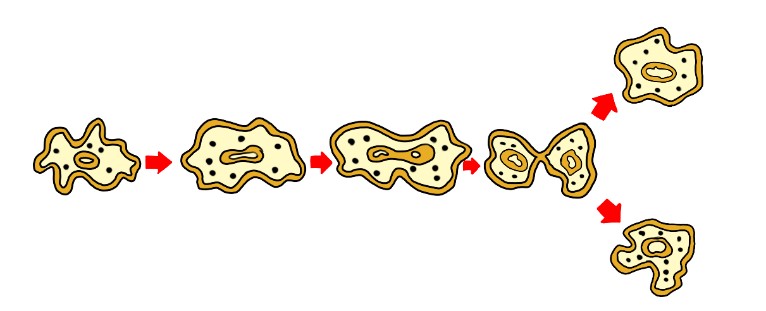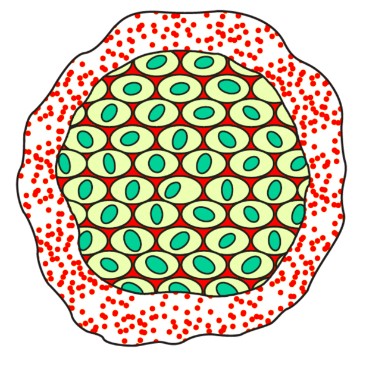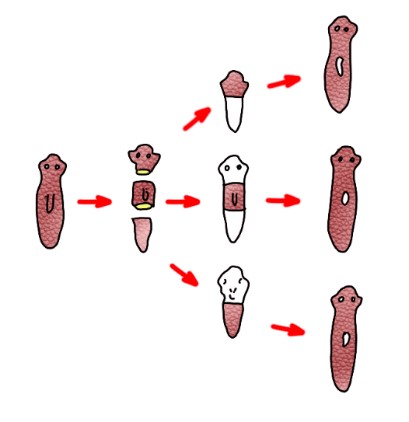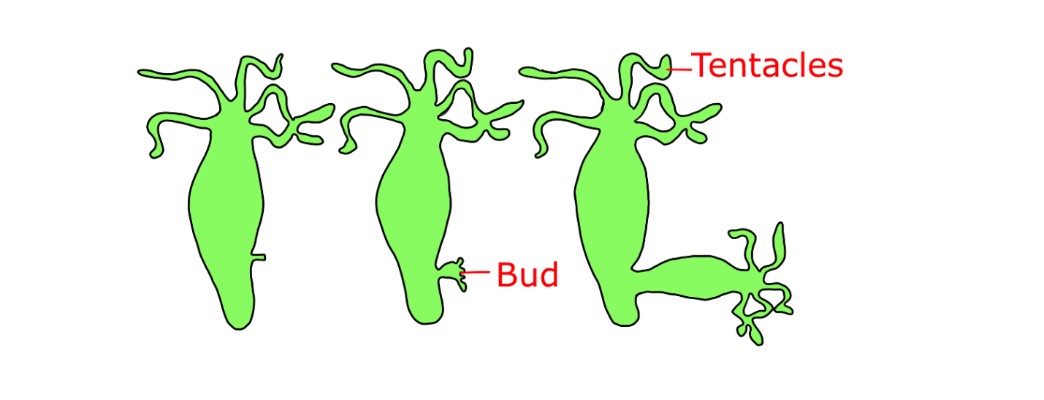Introduction
Reproduction involves making copies of the blueprints of body design. A significant event in reproduction is the creation of DNA copies. Chromosomes in the nucleus of a cell contain information for the inheritance of features from parents to the next generation in DNA (Deoxyribonucleic acid) molecules. The DNA in the cell nucleus is also the information source for making proteins. DNA copying brings variations in the organism and thus evolution. Variation is helpful for the survival of species over time to adapt to the changing conditions in the environment. Therefore DNA copying plays a vital role and has been responsible for species survival for a long time.
Importance of Variation
Copying the DNA each time has some variations.
- The inbuilt tendency for variation during reproduction is the basis for evolution
- Variation is helpful for the survival of species over time to adapt to the changing conditions in the environment


Modes of Reproduction by Single Organisms
It is also known as a sexual reproduction since only one parent is involved. Following are various modes of a sexual reproduction based on the body design of the organisms.
Fission
In unicellular organisms, new individuals are created by cell division or fission.
- Numerous microscopic organisms and protozoa essentially split into equivalent parts during cell division
- Some unicellular organisms like Leishmania (which cause kala-azar) undergo binary fission in a definite orientation
- The malarial parasite Plasmodium divides into many daughter cells simultaneously by multiple fission
- Yeast put out tiny buds that separate and grow further
Fragmentation
Organisms such as Spirogyra simply break into smaller pieces upon maturation which grow into new individuals.
Regeneration
It is the ability to give rise to new individual organisms from their body parts.
- It is carried out by specialised cells
- Hydra and Planaria can be cut into any number of pieces, and each component grows into a complete organism

Budding
Organisms such as Hydra use regenerative cells for reproduction in budding. The buds develop into tiny individuals, detaching from the parent body when fully mature.

Vegetative Propagation
Some plants develop into new plants under appropriate conditions from their parts like the root, stem, and leaves.
Application
- It is utilised in strategies, for example, layering or uniting, to develop many plants like sugarcane, roses, or grapes for agricultural purposes
- Such methods also make possible the propagation of plants like banana, orange, rose, and jasmine that has lost the ability to deliver seeds
Advantages
- Plants raised by vegetative proliferation can bear blossoms and natural products sooner than those delivered from seeds
- All plants produced are genetically similar enough to the parent plant to have all its characteristics
Spore Formation
In Rhizopus, tiny blob-on-a-stick structures called sporangia are involved in reproduction. They contain cells or spores which can develop into new Rhizopus individuals.

Sexual Reproduction
The sexual mode of reproduction incorporates combining DNA from two different individuals during reproduction. Both sexes (males and females) are needed to produce new generations.
- Creating two new cells from one involves copying the DNA and the cellular apparatus
- It is achieved by a process of cell division called meiosis
- One germ cell is large and contains the food stores, while the other is smaller and likely to be motile
- The motile germ cell is called the male gamete, and the germ-cell containing the stored food is called the female gamete
Reproduction in Human Beings
Making copies of body design blueprints are referred to as reproduction. The generation of DNA copies is the most basic event in reproduction. DNA (Deoxyribonucleic Acid) molecules in chromosomes in the nucleus of a cell contain information for the inheritance of traits from parents to the next generation.
Humans use a sexual mode of reproduction. It is done by specialised cell types by the creation of germ cells.
- The period when reproductive tissues begin to mature is known as puberty
- It activates the creation of germ cells to participate in sexual reproduction
- It brings changes in the body at puberty, such as an increase in breast size in girls and new facial hair growth in boys, which are signs of sexual maturation
- The sexual act necessitates the use of particular organs for the actual transfer of germ cells between two humans
Conclusion
Thus, sexual reproduction and asexual reproduction are the two modes of reproduction in living organisms. Asexual reproduction is a mode of reproduction that enable a single parent to produce offspring. Since asexual reproduction occurs in the single organisms/parent, it does not involve any fusion of gametes and involves a complete set of genes copied in offspring as in parent. The offspring so produced are termed as clones i.e. they are morphologically and genetically similar. The various types of asexual reproduction techniques involve budding (yeasts, hydra), binary fission (e.g. amoeba, paramecium, yeast), fragmentation (fungi, moulds, spore formation (slime moulds, vascular plants), vegetative propagation (various plants), parthenogenesis, apomixes etc.
 Profile
Profile Settings
Settings Refer your friends
Refer your friends Sign out
Sign out













